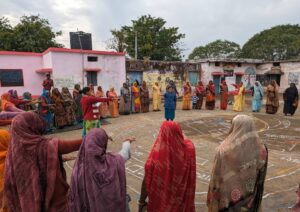
Article
Enhancing Women’s Empowerment Within India’s ...
Sep 2nd 2025
A visual brief on the learnings from a project on the convergence of India's ...
Read MoreA link to the pdf of the full paper is here.
This paper is also published as a working paper at the Harvard Kennedy School.
Abstract: This paper explores the interactions between state and society in rural India within a major community-based development program. We use guidelines of the state, transcripts of 90 interviews and focus groups amongst representatives of actors of all major groups, and field team workshops to construct an in-depth view of the processes and interactions within the ecosystem of six National Rural Livelihoods Mission (NRLM) self-help groups (SHGs) in the state of Madhya Pradesh. These SHGs are linked to credit and market related services and support systems provided by the state. We argue that in design, and even more in implementation, the program exemplifies two substantive tensions. The first tension is between a top-down, “engineering” approach to state delivery on the one hand, and a stated intention to mobilize community and create “institutions of the poor” on the other. The second is between a primary reliance on existing village hierarchies on the one hand, and a goal of empowering poor women from disadvantaged social groups on the other. We argue that these tensions generate an internal logic to state functioning and to on-the-ground processes that lead the SHGs and their federations in our case studies to be stuck at a low level of functioning, and in some cases to become dysfunctional. This study has implications for understanding functionality as the product of relational processes within and between state and society, and home in on a key actor at the interface of these processes – Community Resource Persons (CRPs).